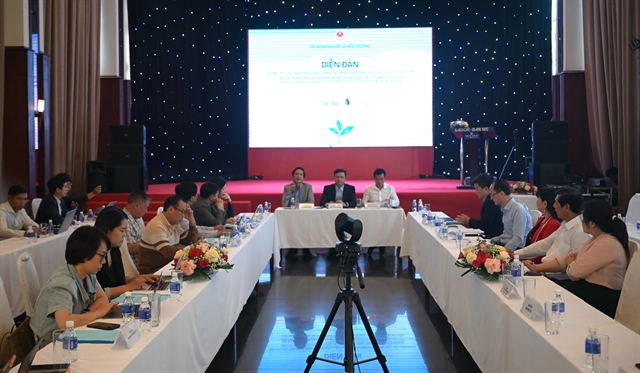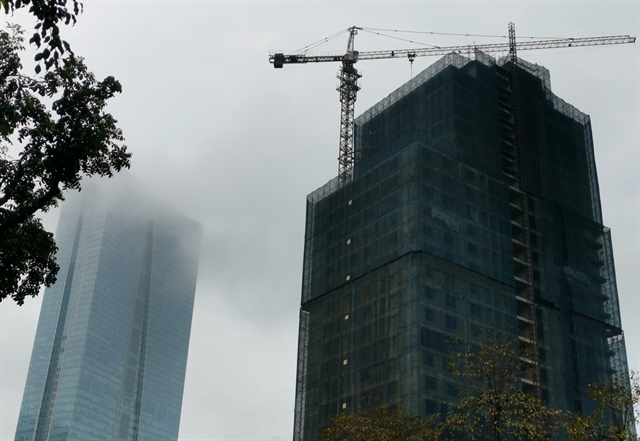 Environment
Environment

The Việt Nam Environment Administration under the Ministry of Natural Resources and Environment has advised members of the public, especially children, the elderly, pregnant women and those with respiratory diseases, to limit outdoor activities due to rising pollution.

|
| Lotte building on Đào Tấn Street in Hà Nội is clouded in smog. Construction work has been blamed as one of the contributors to the city's declining air quality. VNA/VNS Photo Thành Đạt |
HÀ NỘI The Việt Nam Environment Administration under the Ministry of Natural Resources and Environment has advised members of the public, especially children, the elderly, pregnant women and those with respiratory diseases, to limit outdoor activities due to rising pollution.
People should wear air masks and glasses when they go outside, the ministry said.
The ministry officially issued its recommendations two weeks after fine dust levels in Hà Nội and HCM City started reaching highly unhealthy levels.
It warned that levels of PM2.5, a single particle with a diameter of less than 2.5 micrometres, could continue to remain high, especially at midnight and in the early morning. The phenomenon occurs due to dry sunny weather during the day and low surface air temperatures at night.
According to an air quality report for September released on Tuesday by the Việt Nam Environment Administration, PM2.5 levels in Hà Nội over the past few days had reached their highest levels for five years.
The air quality index from September 12 to 29 showed PM2.5 levels exceeded the permitted limit according to statistics collected from 13 environmental monitoring stations in the capital.
During that period, Hà Nội enjoyed only five days when the air quality was good. On the other days, the air quality index reached more than 100, which is classed as unhealthy.
Low rainfall was one of the reasons for the surge in fine dust last month, the report said.
Heat reverse and people burning straw in fields on the city’s outskirts were also to blame for increasing levels of PM2.5, according to the report.
Air quality in Hà Nội is continuing to worsen. The Air Quality Index on AirVisual, an international air quality monitoring facility that generates data from public, ground-based and real-time monitoring stations, reached the purple level (very unhealthy) at 7-8am on Tuesday morning and the brown level (hazardous) at 9am. At this level, air quality is deemed toxic and poses a serious risk to the heart and lungs. Everyone should avoid outdoor exertion.
Associate Professor Vũ Văn Giáp, deputy director of the Respiratory Centre at the Hà Nội-based Bạch Mai Hospital, said: “Fine dust with super small diameters cannot be felt. When we breathe it in it goes into our blood and organs, causing inflammation and diseases to different organs.”
If the air quality worsened, people with heart or respiratory diseases would experience difficulty breathing and cough more, he said.
According to the World Health Organisation, air pollution is a silent killer. About 30 per cent of deaths caused by lung cancer and 43 per cent of deaths caused by respiratory diseases in the world are related to air pollution. If there are no measures taken to protect the air, humans will be the first to suffer the consequences.
Nguyễn Minh Tiến, deputy director of HCM City’s Paediatrics Hospital, advised people to use air filter masks which are able to filter 95 to 99 per cent of fine dust.
Normal masks filter only 30 to 40 per cent of dust. People should keep their houses and bodies clean and eat fruit and vegetables to increase resistance levels. VNS




